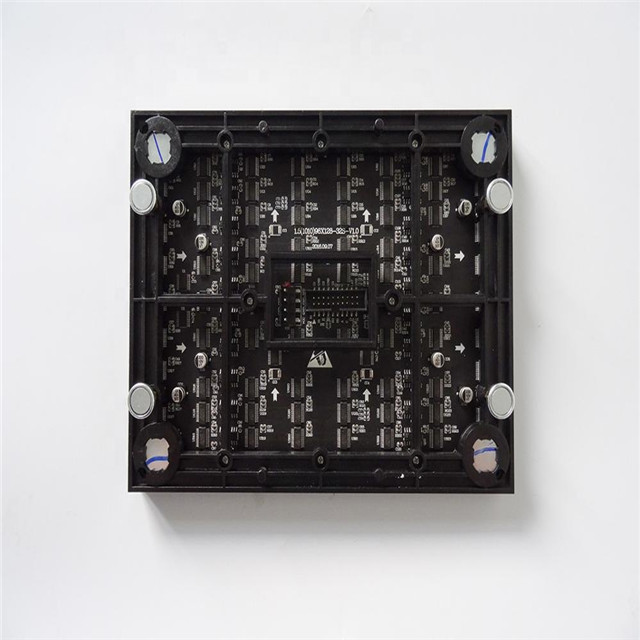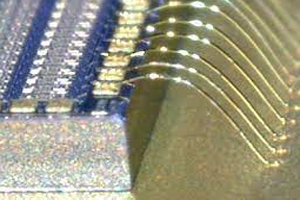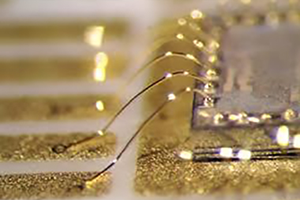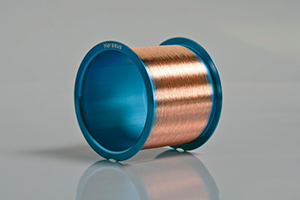What are the packaging factors that affect the effect of LED screen?
The quality of the led display lies in the use of packaging technology, and the key to packaging technology is not only advanced and reliable technology, but also packaging chip materials, materials required for packaging, and process control are directly related. With the rapid development of the media industry, advertising industry, commercial exhibition industry, wedding industry and other industries, the requirements for the picture quality of the LED display and the service life of the LED screen panel are getting higher and higher.

When packaging LED screens, the materials usually used mainly include chips, die-bonding adhesives, brackets, packaging adhesives, and bonding wires. Small flaws in any link will lead to the imperfect presentation of the LED screen display effect.
As an LED screen manufacturer with more than 20 years of professional design, production, and installation experience, GalaxyAV has a very complete quality control mechanism and mature packaging technology accumulation in LED screen packaging. In this article, we will reveal the LED screen panel packaging factors that affect the effectiveness of the LED screen.
1. led screen control chip
The LED screen chip is the core electronic component of the LED screen, and its performance determines the service life, luminous performance, and display effect of the LED screen panel of the entire LED screen. With the continuous development of FPGA technology in the field of LED screen chips, miniaturized and multi-functional LED screen chips are constantly improving the display effect of LED screens.
However, it should be noted that some LED screen manufacturers may neglect to protect the LED screen chip when packaging the LED screen. When the LED screen panel is used in a harsh outdoor environment, it will seriously affect the normal use of the LED screen, resulting in failures, which in turn affect the normal display of images or video content on the LED screen.

2. Sealant for LED screen
Usually, we will choose silicone and epoxy glue as the preferred sealing material for LED screen
Silicone
Silicone materials have the advantages of good insulation, dielectric properties and adhesion, and are relatively good and cost-effective LED screen sealing materials. But its disadvantage is that it is easy to absorb moisture and has weak air tightness. Compared with epoxy resin, it accounts for less in the selection of sealing materials for the entire LED screen.
Epoxy Resin
Under outdoor conditions, epoxy resin is easy to age, has poor heat resistance, and is easy to change color under high-temperature conditions of short-wave light. However, considering that the thermal stress matching degree of LED screen is not high, it will not have a great impact on the packaging effect of epoxy resin, so it is widely used in the entire LED screen panel packaging industry, which greatly improves the LED screen panel performance and life
3. Mounting bracket for LED screen
The material of the LED screen mounting bracket.
Traditional LED screens usually use cast iron as the mounting bracket. But this material is not ideal for LED screen packaging. During transportation and installation, LED screen panels made of cast iron are usually easily deformed, resulting in too large installation gaps.
Today’s LED screen mounting brackets usually use aluminum profiles as raw materials. Aluminium profiles are light in weight and very strong. It is unlikely to deform during transportation.
The role of the LED screen mounting bracket
The reason why aluminum profiles are chosen as the main raw material of the LED screen mounting brackets, another very important factor is the anti-rust function. As we all know, aluminum is a metal with relatively stable chemical properties. It will form an oxide film in the air to prevent chemical reaction with water and rust. This stable anti-rust property makes it the first choice for the main mounting bracket material of outdoor LED screen instead of cast iron.
4. Bonding wire
Bonding wires commonly used in LED screen packaging include gold wires, copper wires, palladium-plated copper wires, and alloy wires.
(1) Palladium-plated copper wire. Palladium-plated copper wire is also called palladium-plated bonded copper wire. Palladium-coated copper wire is to prevent copper wire from oxidation. Palladium-coated copper wire has the advantages of good solderability, high mechanical strength, and moderate hardness. It is often used in high-density multi-pin integrated circuit packaging.
(2) Gold wire. Gold wire is the most widely used and the most mature technology, but it is expensive, which leads to high packaging cost of LED screen. Unless it is in some very high-end or very demanding LED screen projects, it is usually difficult to see gold wires used in the bonding switches of LED screens.
(3) Copper wire. Copper wire is cheap, has the advantages of good heat dissipation and slow growth rate of intermetallic compounds during wire bonding. The disadvantages are easy oxidation, high hardness and high strain strength. Especially in the bonded copper wire firing process, copper is easily oxidized, and the formed oxide film reduces the bonding performance, which puts forward higher requirements for process control in the actual production process



The above points are important factors that affect the quality and service life of the LED screen during the packaging process of the LED screen. When you buy or use LED SCREEN, you need to make a careful comparison of these factors in order to choose an LED screen with excellent performance. Especially in some special projects, such as Dome LED screens and LED video walls that use flexible led screen a lot, these factors will directly affect the project effect of the entire LED screen.
Others also read the following article
Want to know more about the Audio Visual Solutions?
